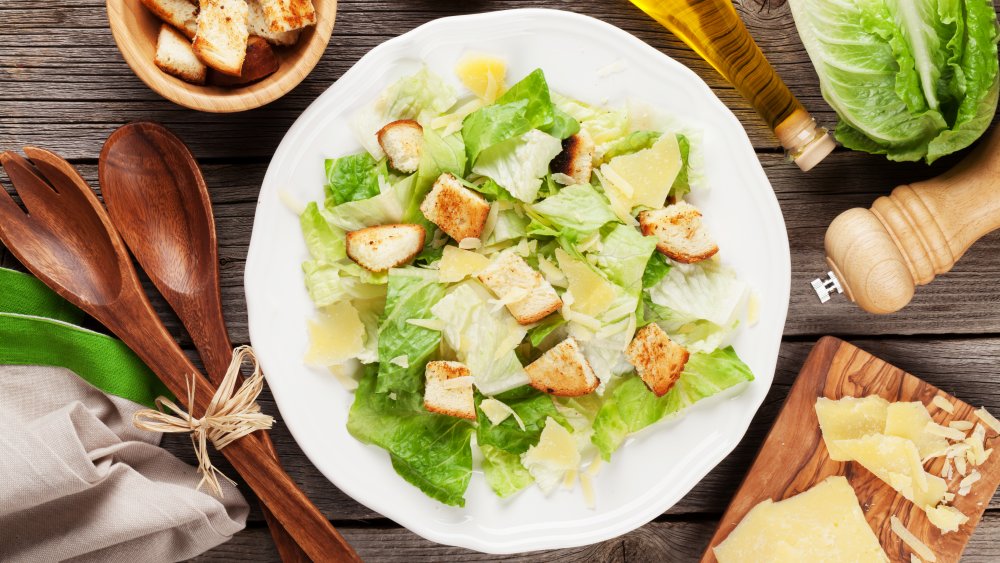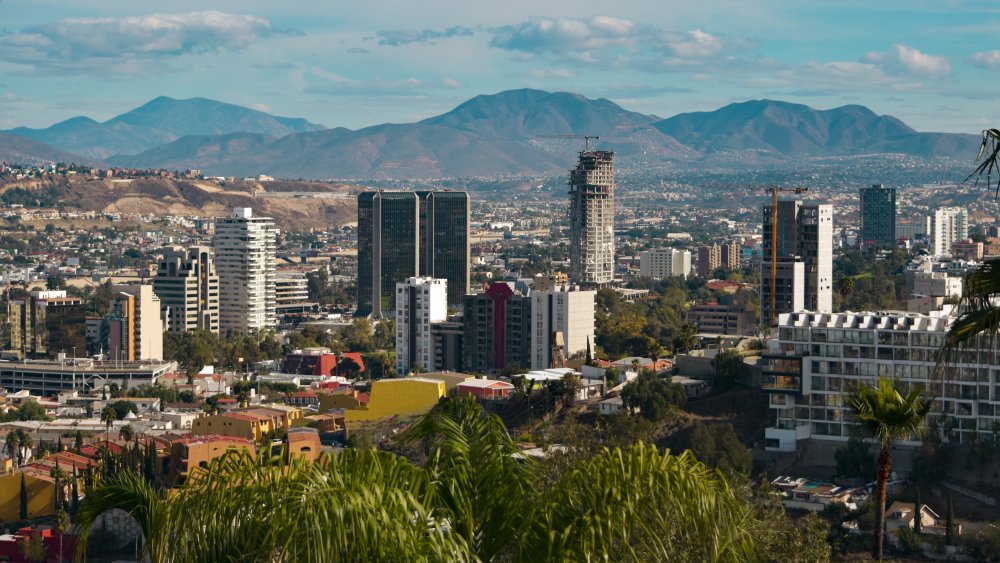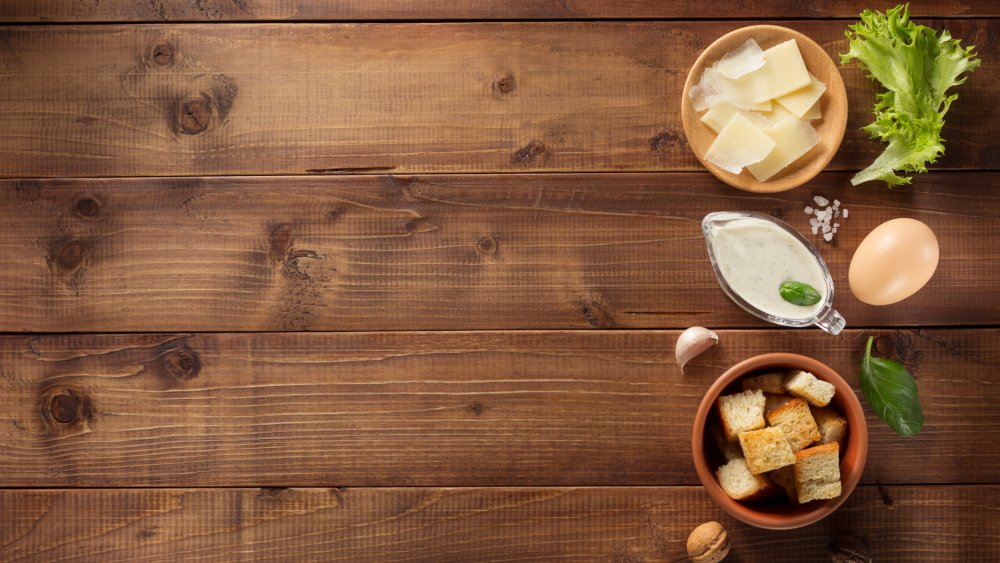You're Probably Wrong About The Origin Of Caesar Salad
More often than we realize, our favorite dishes derive from unexpected origins. Let's not forget that french fries may very well Belgian (via National Geographic). There's also the coveted tacos al pastor: the spicy pork tacos are a Mexico staple, but their culinary roots can be traced to Lebanon (via Tasting Table).
Caesar salad is no different. While it seems to appear on the menu at every Italian restaurant in America, it's strangely absent from restaurants in Italy itself (via Italia Living). Why is that?
The answer is simple, but at the same time, pretty surprising: Caesar salad was originally crafted in Mexico, most likely less than a mile south of the U.S.-Mexico border.
So, while we may equate Caesar salad with endearingly clichéd Italian restaurants that play tarantellas all night long, the origin story is a lot more interesting. It's one of immigration, prohibition, and a few raw eggs, and almost a century later, we're still gratefully eating Caesar salad (via BBC).
Caesar salad's story originates in Tijuana
The origin story of Caesar salad gets a little fuzzy, but this much is confirmed: the salad was created by an Italian-American immigrant working in a Tijuana restaurant. Caesar Cardini, a Northern Italian-born immigrant and restaurateur, had been living for years in California. When prohibition swept across the nation in 1920, Caesar did what pretty much every other San Diego resident did: he traveled south, where alcohol was legal.
Tijuana has long endured a reputation as an unruly party city. In mid-2020, a string of Tijuana bars opened illegally despite ongoing COVID-19 restrictions (via San Diego Union-Tribune). But that reputation was born a century ago, when Californians began heading over to the Mexican border town for drinking and gambling. There, prohibition was basically useless, and Tijuana resultantly drew both "mobsters and movie stars," according to writer Paul Vanderwood (via KPBS).
Caesar Cardini likely saw Tijuana as a lucrative business opportunity, so he opened the still-standing Caesar's Restaurant.
An improvised salad
From there, the stories vary. Cardini's daughter attested that on a busy Fourth of July in the restaurant, her father tossed together a salad with olive oil, raw egg, parmesan, croutons, and Worcheshire sauce. Another version claims that Cardini's brother, Alex Cardini, threw together the ingredients with anchovies for a group of American airmen (via Food & Wine).
Either way, the salad was a hit, and Caesar Cardini became the name associated with the legendary food. (Thankfully, we don't have to go around to restaurants ordering Alex salads.)
Despite the multiple origin stories, it seems certain that the salad was an improvisation, created on the fly — the ingenious, creamy result of fearless experimentation. When cookbook maven Julia Child visited Caesar's Restaurant with her parents, she was enthralled by the recipe's innovation.
"It was a sensation of a salad from coast to coast, and there were even rumblings of its success in Europe," she wrote years later (via HuffPost).
Amazingly enough, the salad is still proudly offered at the original Tijuana restaurant for 155 pesos — at the current exchange rate as of this writing, that's a little under 7 U.S. dollars (via Caesar's Tijuana).


